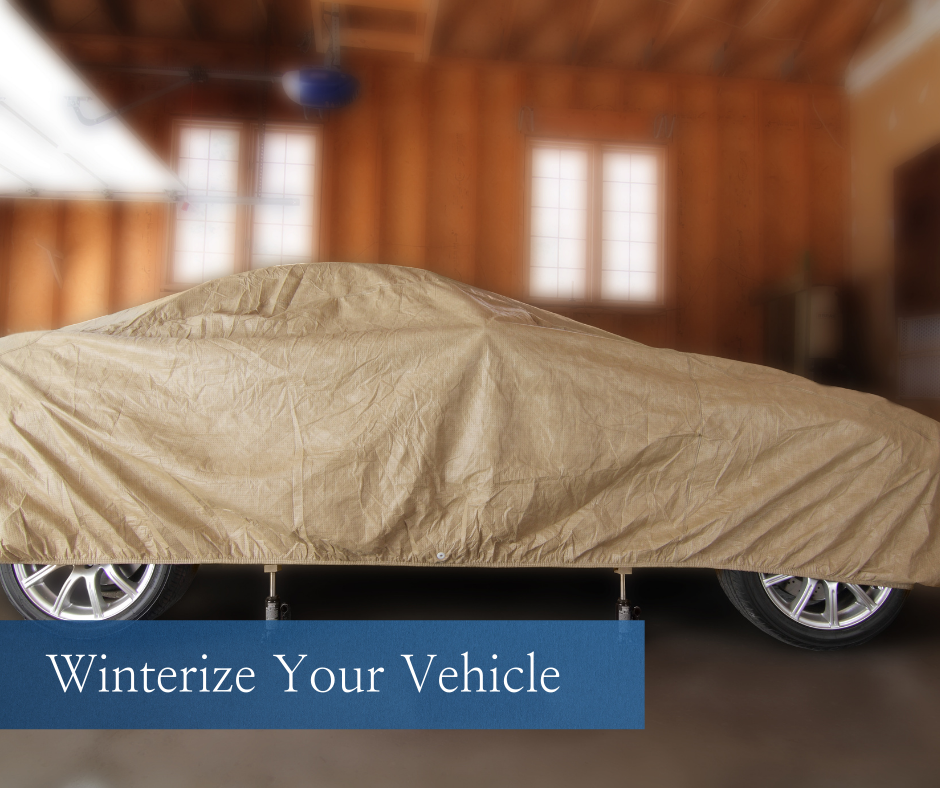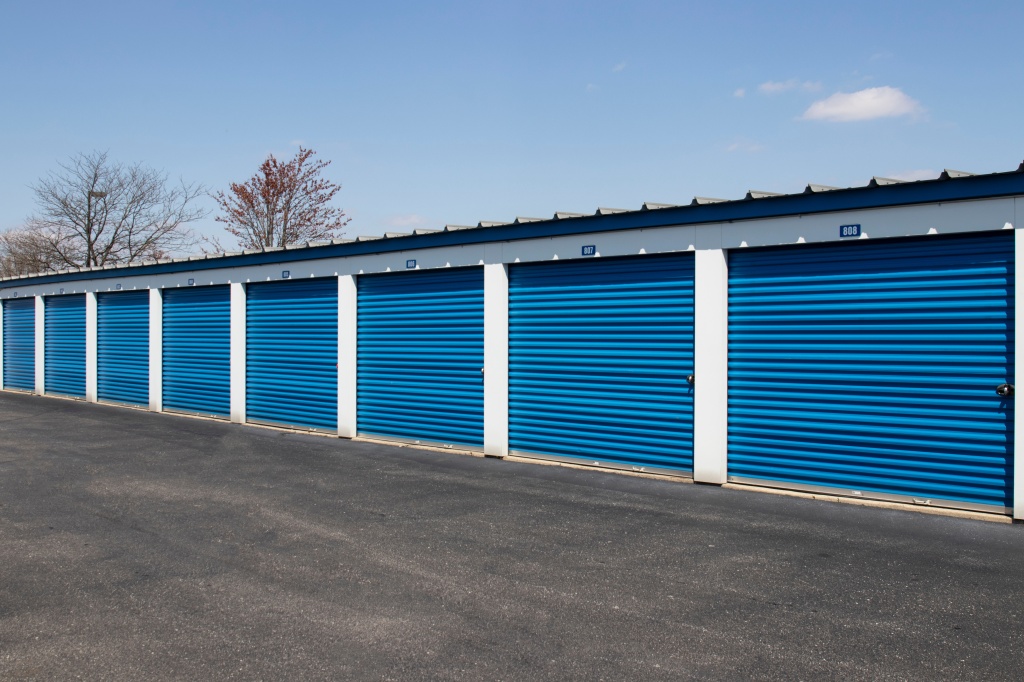Storing Your Car for the Winter

Use vehicle storage to keep your vehicle safe and secure during the winter months and free up the garage at home.
For owners of classic, antique, and vintage cars, sports cars, and racing cars, storing your seldom-used car in a storage unit is often a viable option. Whether your vehicle is expensive, displayed in auto shows and parades, or just an average car holding only personal sentimental value, you will want to know how to best prepare your car for storage. Proper storage will extend the life of your vehicle and keep it looking new and running in top condition.
Climate-Controlled Vehicle Storage

Storing your vehicle in an enclosed, climate-controlled self-storage unit is essential. A damp storage unit will cause rust damage to vehicles. Keeping your car in an enclosed storage unit will keep your car safe from theft and vandalism, as well as nature’s elements. Components such as snow, rain, heat, hail, and dust can damage your vehicle and significantly depreciate its value. Placing your car in storage will protect it from being hit by another vehicle. You will want to choose a storage unit near your home so you can check on it frequently.
Insurance
Before storing a vehicle, be sure to check with your insurance carrier. Many insurance companies offer coverage primarily written to protect your car while in storage. Such off-road coverage can provide significant savings over road insurance coverage.
Vehicle Storage Checklist
While preparing a car for storage, keep the following checklist handy and follow it carefully so that your vehicle will run to its optimal performance level and continue to look like new when it’s time to take it out of storage.

- Gather the tools and supplies that you may need before you get started. You will need handy supplies: various quality cleaners and protectants, a tire gauge, plastic drop cloth, cotton cloth, mothballs, and mouse traps. You will also need plastic bags, duct tape, fuel stabilizer, WD40, desiccant sacs, and jack and jack stands. You may also need a large wood block for the battery and thin wood trim pieces under the windshield wipers. Make sure that you have adequate amounts of each type of fluid on hand to top off all of your fluids.
- Clean Your Car thoroughly, both inside and out. Wash the exterior and use a buffer over the entire exterior of the car to buff out all imperfections and apply a good coat of wax. This will protect the body from corrosion. Consider having this professionally done.
- Wipe the mirrors clean. Dirt and residue left on mirrors for long periods can cause rust and corrosion.
- Remove all trash and debris from the interior of the car. Vacuum it thoroughly to remove all pet hair and food crumbs. Use a stain remover to scrub away any stains from the carpet and upholstery. Use an air freshener spray to remove all odors inside your car. Remove all items from the trunk of your vehicle, and don’t neglect to clean the carpet in the trunk area correctly.
- Repairs that may be needed should be done before placing your car in storage to prevent further deterioration.
- Change the oil and filter one to two days before storing it. Used oil contains acids, moisture, and other combustion byproducts that will cause engine corrosion over time, especially when the car sits for long periods.
- Drive your car for several miles after the oil change and before storing it to allow the oil to circulate throughout the entire engine.
- Pull the spark plugs and add about a teaspoon of engine oil inside each cylinder. Replace the spark plugs – this will coat the cylinders inside to prevent rust.
- Seal off all engine openings using an absorbent cotton cloth. This will absorb any moisture to protect the engine. It will also deter bugs and mice from getting inside. Use cotton cloth to fill other openings in the exhaust pipes and other spaces. Be sure to write this down on your maintenance checklist to remind yourself to remove the cotton cloth when taking your car out of storage before driving it again.
- Spray the exposed metal surfaces of your engine with a good lubricant such as WD40 to prevent rust. The WD40 will quickly evaporate, causing a protectant film to cover the carb body, hose clamps, coils, and other parts.
- Fill the gas tank to prevent moisture and air from getting into your tank; however, if storing in a poorly ventilated unit where gas fumes may create a problem, keep the gas tank only half full.
- Add a fuel stabilizer to the gas tank. Be sure to drive the car around for about 10 miles after adding the fuel stabilizer to allow it to circulate throughout the system. Neglecting to add a fuel stabilizer can cause the gas to break down, causing it to form gum and varnish when it deteriorates.
- Check the color of the brake fluid. The brake fluid should look clear. If the brake fluid is brown and looks dirty, the brake fluid needs to be flushed out and refilled with new fluid. When brake fluid gets old, it contains moisture which can rust the brake system. Be sure that the brake, clutch, and master cylinders are full of brake fluid. Brake fluid absorbs water quickly. It is recommended that the brake and clutch fluid be bled out annually to purge the system of contaminated brake fluid.
- Flush transmission fluid, steering fluid, and engine coolant if it appears dirty to prevent corrosion to their systems. If these fluids are clear, top them off to prevent air and moisture from getting inside, which will also cause damage.
- Convertible Tops should be stored with the top left up. When the convertible top is left open for long periods, it can develop large, ugly-looking creases. Treat the convertible top with silicone or other lubricants. Desiccant sacs can be placed inside the car’s interior on the floor. This will keep moisture that may form from humidity from damaging the top.
- Tires can go bad when sitting in storage for long periods. They can develop dry rot and flat spots. Avoid using products to give your tires a shine as they will dry out the tires and increase dry rot. Over-inflate the tires slightly to 37 or 38 psi to prevent flat spots. Have tires checked for leaks and have them repaired before storage. Tires with an “H” rating or higher will do best in storage.
- Refer to your owner’s manual when caring for your battery. Some car specialists suggest removing the battery and placing it on a wooden block so it won’t be drained. Others suggest leaving the battery in the car but disconnecting the negative (-) terminal. Still, other car specialists insist that the battery be left intact to prevent voltage spikes. Voltage spikes can do significant damage to components.
- A Storage Switch can be found on some cars. When flipping this switch, the battery shuts off, preventing the battery from draining and deterring theft.
- Roll up the windows and close vents to protect your car against moisture and from bugs and mice getting inside.
- Check hoses for bulges and cracks, and have them replaced if they show extensive damage.
- Exhaust Pipes can be protected from moisture and pests from getting inside by placing a plastic bag over the exhaust pipe opening and sealing it around the exhaust pie with duct tape.
- Windshield Wipers remove the blades and place thin wood strips or white cotton cloth under the wipers to prevent them from scratching the windows.
- Park the car on a plastic sheet or jacks. Make sure the emergency brake is off to prevent it from sticking.
- Cover your car with a tarp to keep it safe from dust.
- Set moth balls around the outside of the car and mouse traps to keep pests away.
- Visit your car at least once a month; start the engine and let it run for a few minutes. WARNING: Ensure you leave the door to your storage unit open when running the engine for proper ventilation. Take your car for a quick drive to get all parts moving.
- Revive the car after long storage. Open all windows to air out your car. Remove the cotton cloth placed in all pipe openings. Remove the plastic bag from the exhaust pipe. Check all fluids. Reinstall the battery and make sure it is fully charged. Take your car for a drive.
